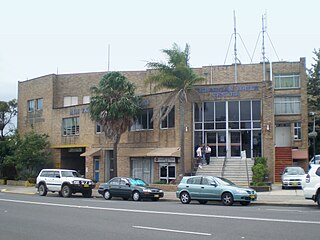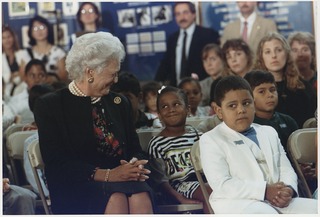Related Research Articles

Adult education, distinct from child education, is a practice in which adults engage in systematic and sustained self-educating activities in order to gain new forms of knowledge, skills, attitudes, or values. It can mean any form of learning adults engage in beyond traditional schooling, encompassing basic literacy to personal fulfillment as a lifelong learner, and to ensure the fulfillment of an individual.

Youth work is a community support activity aimed at older children and adolescents. Depending upon the culture and the community, different services and institutions may exist for this purpose. In general, it provides an environment where young people can engage in informal educational activities. Throughout the United Kingdom, United States, and Canada, youth work is "to facilitate personal, educational, and social development." Through participative activities and coordinated programs, it seeks to enable young people in "gaining a voice, influence, and place in society in a period of their transition from dependence to independence." By nature and design these activities would be inclusive, educative, and empowering, and based on partnership, equality of opportunity, and respecting diversity.
Collaborative learning is a situation in which two or more people learn or attempt to learn something together. Unlike individual learning, people engaged in collaborative learning capitalize on one another's resources and skills. More specifically, collaborative learning is based on the model that knowledge can be created within a population where members actively interact by sharing experiences and take on asymmetric roles. Put differently, collaborative learning refers to methodologies and environments in which learners engage in a common task where each individual depends on and is accountable to each other. These include both face-to-face conversations and computer discussions. Methods for examining collaborative learning processes include conversation analysis and statistical discourse analysis.
Erikson's stages of psychosocial development, as articulated in the second half of the 20th century by Erik Erikson in collaboration with Joan Erikson, is a comprehensive psychoanalytic theory that identifies a series of eight stages that a healthy developing individual should pass through from infancy to late adulthood.

Youth empowerment is a process where children and young people are encouraged to take charge of their lives. They do this by addressing their situation and then take action in order to improve their access to resources and transform their consciousness through their beliefs, values, and attitudes. Youth empowerment aims to improve quality of life. Youth empowerment is achieved through participation in youth empowerment programs. However scholars argue that children's rights implementation should go beyond learning about formal rights and procedures to give birth to a concrete experience of rights. There are numerous models that youth empowerment programs use that help youth achieve empowerment. A variety of youth empowerment initiatives are underway around the world. These programs can be through non-profit organizations, government organizations, schools or private organizations.

Youth voice refers to the distinct ideas, opinions, attitudes, knowledge, and actions of young people as a collective body. The term youth voice often groups together a diversity of perspectives and experiences, regardless of backgrounds, identities, and cultural differences. It is frequently associated with the successful application of a variety of youth development activities, including service learning, youth research, and leadership training. Additional research has shown that engaging youth voice is an essential element of effective organizational development among community and youth-serving organizations.
The New York University Silver School of Social Work provides social work education from undergraduate through doctoral levels.

Youth participation is the active engagement of young people throughout their own communities. It is often used as a shorthand for youth participation in any many forms, including decision-making, sports, schools and any activity where young people are not historically engaged.

Civic engagement or civic participation is any individual or group activity addressing issues of public concern. Civic engagement includes communities working together or individuals working alone in both political and non-political actions to protect public values or make a change in a community. The goal of civic engagement is to address public concerns and promote the quality of the community.

Youth-adult partnership is a conscious relationship that establishes and sustains intergenerational equity between young people and adults. Youth-adult partnerships often display a high degree of youth rights and autonomy, and is often synonymous with meaningful youth participation. Typically seen with adults acting in a mentor capacity, providing scaffolding to the youth. Unlike traditional mentoring, youth-adult partnerships are categorized by multiple adults and multiple youth and there must also be a mutuality where adults and youth teach and learn from one another, working together in their community.
Peer mentoring is a form of mentorship that usually takes place between a person who has lived through a specific experience and a person who is new to that experience. An example would be an experienced student being a peer mentor to a new student, the peer mentee, in a particular subject, or in a new school. Peer mentors are also used for health and lifestyle changes. For example, clients, or patients, with support from peers, may have one-on-one sessions that meet regularly to help them recover or rehabilitate. Peer mentoring provides individuals who have had a specific life experience the chance to learn from those who have recovered, or rehabilitated, following such an experience. Peer mentors provide education, recreation and support opportunities to individuals. The peer mentor may challenge the mentee with new ideas, and encourage the mentee to move beyond the things that are most comfortable. Most peer mentors are picked for their sensibility, confidence, social skills and reliability.

Community Education, also known as Community-Based Education or Community Learning & Development, or Development Education is an organization's programs to promote learning and social development work with individuals and groups in their communities using a range of formal and informal methods. A common defining feature is that programmes and activities are developed in dialogue with communities and participants. The purpose of community learning and development is to develop the capacity of individuals and groups of all ages through their actions, the capacity of communities, to improve their quality of life. Central to this is their ability to participate in democratic processes.

Learning for Life (LFL) is a United States school and work-site based youth program that is an affiliate of the Boy Scouts of America. It utilizes programs designed for schools and community-based organizations that are designed to prepare youth for the complexities of contemporary society and to enhance their self-confidence, motivation, and self-esteem, and for careers.
An at-risk student is a term used in the United States to describe a student who requires temporary or ongoing intervention in order to succeed academically. At risk students, sometimes referred to as at-risk youth or at-promise youth, are also adolescents who are less likely to transition successfully into adulthood and achieve economic self-sufficiency. Characteristics of at-risk students include emotional or behavioral problems, truancy, low academic performance, showing a lack of interest for academics, and expressing a disconnection from the school environment. A school's effort to at-risk students is essential. For example, a study showed that 80% to 87% of variables that led to a school's retention are predictable with linear modeling. In January 2020, Governor Newsom of California changed all references to "at-risk" to "at-promise" in the California Penal Codes.
Youth philanthropy is the donation of time, energy or resources, including money, by children and youth towards philanthropic causes. According to one study, "youth philanthropy is, at the broadest level, youth giving of their time, talents and treasure." It is seen as an effective means in which youth develop knowledge of and participate in philanthropic projects such as volunteering, grant writing, and community service.
Youth engagement is the sentiment young people feel towards a particular person, activity, place or outcome. It has been a focus of youth development, public policy and social change movements for at least forty years. According to a Cornell University program, "Youth engagement is one of the buzzwords in the youth development field. Similar terms are youth voice, youth involvement, youth participation, and youth in governance."

Literacy in the United States was categorized by the National Center for Education Statistics into different literacy levels, with 92% of American adults having at least "Level 1" literacy in 2014. Nationally, over 20% of adult Americans have a literacy proficiency at or below Level 1. Adults in this range have difficulty using or understanding print materials. Those on the higher end of this category can perform simple tasks based on the information they read, but adults below Level 1 may only understand very basic vocabulary or be functionally illiterate. According to a 2020 report by Gallup based on data from the U.S. Department of Education, 54% of adults in the United States lack English literacy proficiency.
Massachusetts Promise Fellowship (MPF) is a non-profit AmeriCorps organization that places Fellows who commit to a year of service at non-profit organizations, schools, and city agencies across Massachusetts to create, lead, and manage youth development projects.
Sports-based youth development or SBYD is a theory and practice model for direct youth service. Grounded in youth development, sports psychology, and youth sports practice, SBYD aims to use the sport experience to contribute to positive youth development. Sports-based youth development is similar to sport for social development.

Mary Conway Kohler (1903–1986) was an American laywer and juvenile court judge. She has been described as an advocate for young people. She worked in San Francisco, California and then in New York, where she worked as a child welfare consultant. He career focused on those who were caught up in the courts. She helped found the National Commission on Resources for Youth and worked as an advisor to many different commissions, including the Tweed Commission.
References
Constructs such as ibid. , loc. cit. and idem are discouraged by Wikipedia's style guide for footnotes, as they are easily broken. Please improve this article by replacing them with named references ( quick guide ), or an abbreviated title. (November 2023) |
- ↑ Mary Conway Kohler, Young People Learning to Care: Making a Difference through Youth Participation, The Seabury Press,1983
- ↑ The National Commission on Resources for Youth, New Roles for Youth in the School and the Community, Citation Press, 1974
- ↑ Ben Sasse,The Vanishing American Adult - How to Rebuild a Culture of Self-Reliance, St. Martin's Press, 2017
- ↑ Op Cit, Mary Conway Kohler, Young People Learning to Care: Making a Difference through Youth Participation, The Seabury Press, 1983
- ↑ See under Publications by the Commission